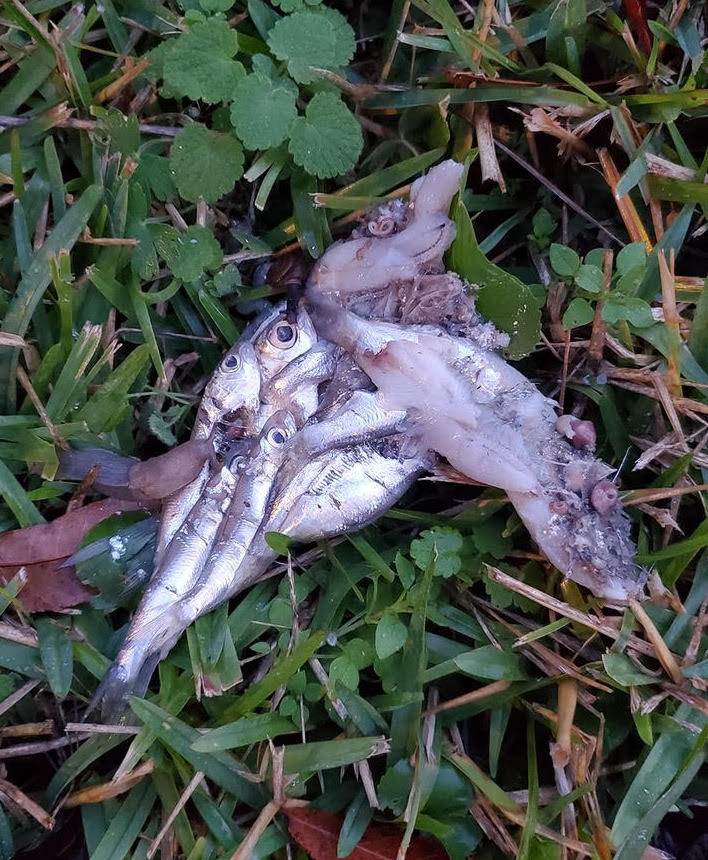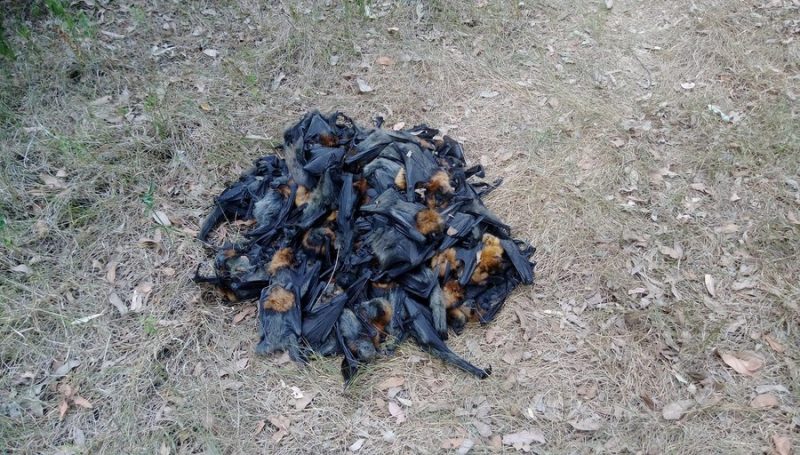
Raining fish and frogs
Throughout history, there’ve been accounts of fish, frogs, birds and even spiders falling from the sky over many parts of the world. And maybe you’ve experienced an animal fall yourself, or at least thought you did. It’s not always clear. For example, once, one of us (Don Machholz) walked outside one day and saw a bunch of live toads on the ground, hopping around. But did they fall from the sky? In this case, no. It turns out toads had come out from their hiding places after a heavy rain.
But animals do, indeed, sometimes fall from the sky. For example, waterspouts or tornados can pick up animals and carry them long distances. NOAA Tornado and Waterspout researcher Joe Golden has said:
There is no doubt that large waterspouts can carry large quantities of water upward in their circulation. Some rotate over 200 miles per hour. The objects picked up could be small fish and frogs.
And waterspouts and tornados aren’t the only reason for animal falls. Keep reading to learn of some documented animals falls, and the variety of reasons for them.

A rain of anchovies in San Francisco, 2022
Anchovies fell from the sky recently – in June 2022 – in San Francisco. SFGate reported:
… one person said they ‘heard a whoosh sound behind me and heard a massive splat’ before seeing fish scattered on a nearby driveway. Another commented that they ‘almost got hit by a fish [while] waiting for a bus’ …
Some of the fish seemed to be in poor shape. And the weather was good. The fish fall appears to have stemmed from a boom in the Northern Anchovy population earlier this year. Birds love to eat these fish. But they can be careless about holding onto them and sometimes drop them. The report from NBC Bay Area below explains more:
Falling iguanas in Florida, 2022
Sometimes, when temperatures fall in wintertime, iguanas seem to fall from the skies in Florida. The National Weather Service sometimes issues warnings for falling iguanas. But the iguanas don’t really fall from the sky. Instead, they drop down from trees and other high places. The reason is that iguanas are cold-blooded. They rely on external heat to keep warm. So if they get too cold, they might become rigid … and lose their grip on a tree. Case solved.
Feb 2 – Well it’s that time again. It’s cold enough for us to forecast falling Iguanas here in South Florida. Look out tonight and again on Wednesday night. Temps will be in the 30s and 40s. Brrrr! #flwx pic.twitter.com/PeVRsHnZNm
— NWS Miami (@NWSMiami) February 2, 2021
A rain of fish in Texarkana, Texas, 2021
This classic fish-falling story from the sky came from Texarkana, Texas, on December 29, 2021. By all reports, the fish found on the ground over nine square miles seemed, well, chewed up. The City of Texarkana first reported the cause as waterspouts. But half a year later – in June 2022 – two investigators told a different story. Geologist Sharon A. Hill reported in her blog that she and and Australian author Paul Cropper were “fairly confident” that:
… A flock of cormorants (and possibly other birds) disgorged their recently consumed meals of small shad while in the air or perhaps during takeoff.
Read more about the 2021 Texarkana fish fall from the Dallas Morning News. And check out the tweet below, which includes a video of the Texarkana fish on the ground.

Yep. It rained fish at my house too. pic.twitter.com/NRfT8veXT9
— Camille Warren (@camillecwarren) December 30, 2021
A fall of bats, New South Wales, 2018
In Campbelltown, New South Wales, Australia, bats fell from the sky in January 2018. Not just any bats … dead bats. There was no severe weather. But it was very hot outside.
And it seems the severe heat caused the fall of bats. Bats can’t handle hot weather. It appears they died and fell to the ground. By some reports, more than 200 bats perished.

A fall spiders in Australia, 2015
In May 2015, people in Goulburn, Australia, awoke to find millions of baby spiders raining down from the sky. What’s more, there were webs covering everything. Goulburn resident Ian Watson told the Sydney Morning Herald:
The whole place was covered in these little black spiderlings and when I looked up at the sun it was like this tunnel of webs going up for a couple of hundred meters into the sky.
He added that his house looked like it had been:
… abandoned and taken over by spiders.
And it turns out the residents of Goulburn are the only ones to have witnessed a rain of spiders. Other documented incidents have occurred as far away as Texas and Brazil. What happened? Naturalist Martyn Robinson from the Australian Museum later suggested the answer, a spider dispersal technique called “ballooning.” The spiders, usually baby spiders but sometimes adults as well, climb to the top of vegetation and releases streamer of silks that catch the breeze.
"'Spider rain' reported in Australiahttp://t.co/rdFpqZv7er" whoa. Have never heard of this before. pic.twitter.com/dwRhV36bUY
— Sriniketh Ramachandran (@CharPointer) May 20, 2015
A fall of dead blackbirds in Beebe, Arkansas, 2010
More than 4,000 dead blackbirds fell in Beebe, Arkansas, beginning just before midnight on December 31, 2010. Their cause of death was later described as “blunt force trauma.” Remember, it was New Year’s Eve. A study said the Arkansas Game and Fish reported that radar images showed the birds became startled and began to fly at 10:20 p.m. and at 11:21 p.m. They associated those times with fireworks in the area, which startled the birds. Blackbirds do not have good eyesight and seldom fly at night. Plus the fireworks forced them to fly at lower altitudes than usual, and they flew into things such as trees, houses, windows, power lines and towers.
Gary Graves, a Smithsonian curator of birds, later said that 1.6 million birds had been roosting in the area. He commented:
That’s huge. So, when you look at the number that was actually killed, that’s hardly any.
Why doesn’t this happen every year in Beebe? Well, it did occur exactly one year later, on December 31, 2011. But this time, it was dozens of birds, not thousands.
What about the following year? No dead blackbirds. THV11 – the CBS affiliate in Little Rock, Arkansas – reported in 2018 that:
The woods where it’s believed the birds were living have since been torn down for the construction of a Walmart. But the story of the birds is still very present in the community.
#DidYouKnow
On the last day of 2010, 1,000 blackbirds fell out of the sky, dead, in Beebe, Arkansas. Authorities had their theories of why it happened, from high winds to stress-related trauma, but couldn’t figure out anything conclusive.https://t.co/91ThnzqMx0 pic.twitter.com/YaQsIwMpst— List25 (@list25) October 14, 2018
Why animals fall from the sky
So, to sum up, here’s why animals fall from the sky.
– They’re picked up during a storm and deposited elsewhere.
– They’re blown into a region by strong winds.
– They travel over land and settle into a new location.
– They fall from trees due to heat or cold.
– Birds drop animals.
– Birds get disoriented or killed and then fall from the sky.

Bottom line: Animals rain down – or appear to have rained down – from the sky for lots of different reasons. This post has multiple documented stories about recent animal “rains.”











